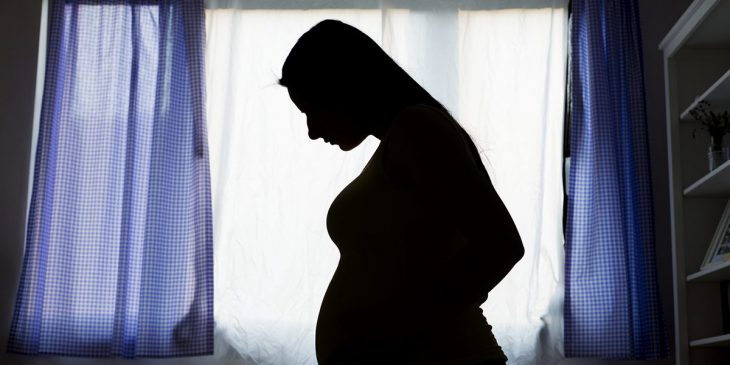Pregnant women and new mothers in Pennsylvania felt more stressed during COVID-19 stay-at-home orders in early 2020 than before the pandemic, according to a new study from the University of Pittsburgh that analyzed participants’ real-time stress levels with an innovative smartphone app.
Unlike other studies that investigated stress in women who are pregnant or have given birth during the COVID-19 pandemic, Pitt researchers had access to participants’ stress data from before the virus started to spread in the U.S., which made the comparison possible. The researchers hope to highlight the importance of supporting pregnant people and new mothers as the pandemic drags on.

Dr. Serwaa Omowale
“Studies have shown an increase in anxiety, depression and post-traumatic stress disorder in the general population during the COVID-19 pandemic,” said the study’s lead author Dr. Serwaa Omowale, who recently completed her Ph.D. in social work at Pitt. “This got me thinking about whether pregnant people and new mothers with babies at home were experiencing more stress during the pandemic than before.”
High stress levels during pregnancy have been linked with a greater risk of preterm birth or delivering a low-birthweight baby, and research suggests that racism-related stress may contribute to poor health outcomes in Black mothers and their babies. Black women in the U.S. have higher rates of pre-term births and are about three times more likely to die during pregnancy than their white peers.
In an effort to better understand the roles that stress and other factors play in racial disparities among perinatal populations, Dr. Dara Mendez, senior author on the new study and assistant professor of epidemiology and director of the Center for Health Equity at Pitt, launched the Postpartum Mothers Mobile Study (PMOMS) in 2017.

PMOMS cellphone app
This ongoing, long-term study uses cellphones to collect data on women’s health in real-time. PMOMS participants receive surveys through a smartphone app in the morning, evening and at random times throughout the day. They are asked to rate if they are feeling “nervous or stressed right now” on a scale of 0 to 4.
Mendez and Omowale realized that the data they were already collecting for PMOMS could offer unique insight into how the pandemic influenced stress in pregnant women and new mothers. And because they were using smartphone technology, the researchers were able to continue their study even when lab shutdowns forced many others to pause data collection.
“What’s unique about our study is that you get participants’ experiences in real-time as they go about their lives,” said Omowale. “A participant could be at home or in the hospital when they receive that survey, so you’re getting responses as that person is experiencing stress or mood changes; you’re not asking them to recall the experience they had yesterday or a week ago.”
In total, the researchers analyzed responses from 85 pregnant or postpartum people from a maternity hospital in southwestern Pennsylvania, including 32 who identified as Black and 53 who identified as white.
The findings, published today in JMIR Mental Health, show that both Black and white participants reported higher stress levels when Pennsylvanian shelter-in-place orders were in place compared to the 11-week period before the virus started to spread in the U.S. Contrary to the researchers’ expectations, stress levels were similar between Black and white women during both of these phases.
Another unexpected finding was that while Black women’s stress levels dropped back to near-baseline levels when stay-at-home orders were lifted, white women reported a further increase in stress during this phase.
It’s not clear why white participants reported higher stress levels than their Black counterparts after restrictions eased. Some people may have experienced stressful events such as loss of income or employment due to COVID-19, but such life changes were not measured in the study.
“As we are starting to see surges in COVID-19 cases and the emergence of variants, we may see more restrictions,” said Omowale. “So, we need to think about how we are addressing the experiences of pregnant and perinatal populations and what kinds of support systems we can put in place.”









